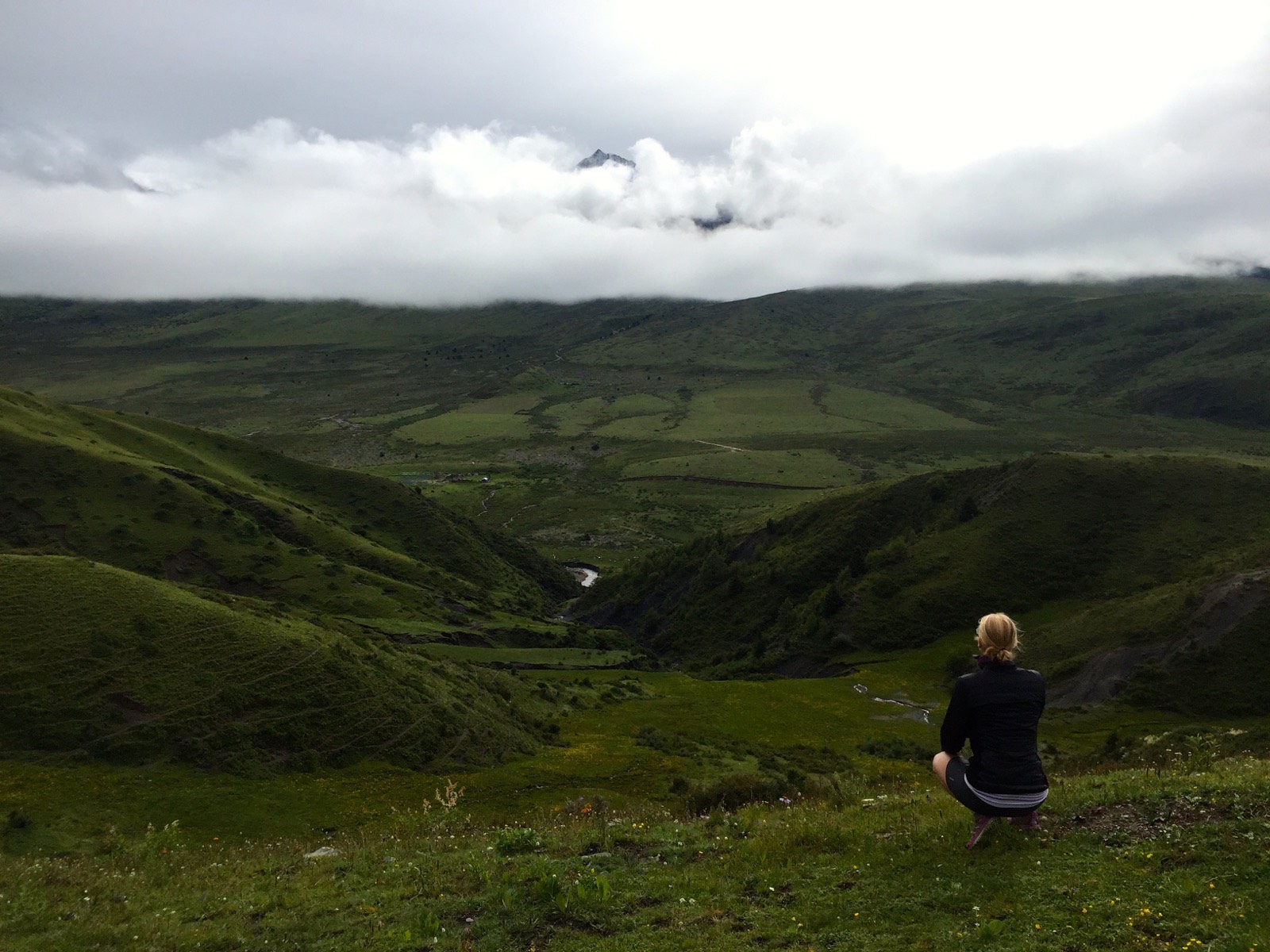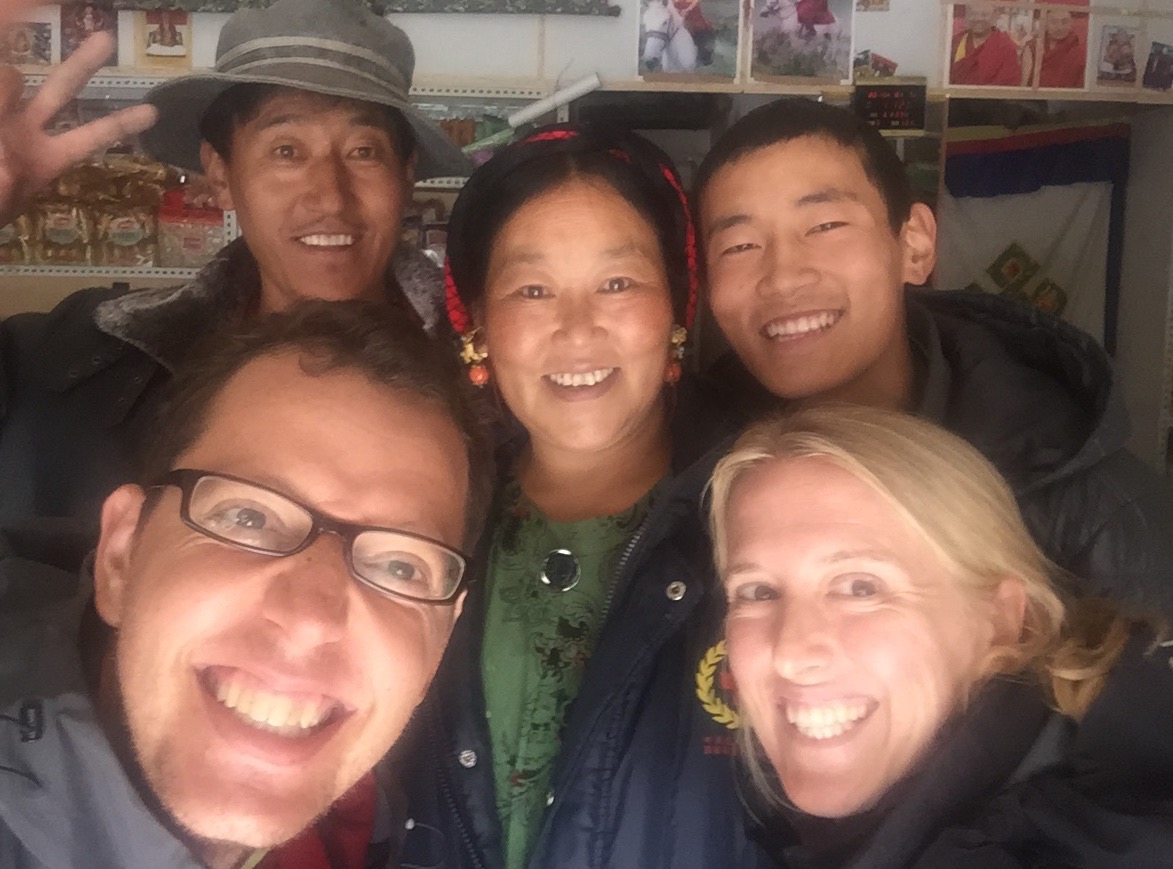The tour that Bike China proposed was epic: 10 days, 500 miles, over 27,800 feet (5.25 vertical miles) of combined ascent. It climbed west out of Chengdu, through the dramatic western Sichaun mountains – which are a lesser known, but still quite gigantic, section of the Himalayas – and then descended back “down” onto the Tibetan plateau at 12,000 feet. After a night up on the Plateau, known as “the roof of the world”, the route turned back east, climbing up once more over the Sichuan Himalayas, before careening crazily down again to the Sichuan basin.
Even Michael - who loves to climb mountains by bicycle - was stunned by the ambition of the route.
The best comparison we could conjure was to Trail Ridge Road, the biggest climb of Michael’s entire bike trip across the U.S. Michael quickly determined that the distance and elevation profile of our toughest days would be more difficult than that of Trail Ridge Road – and with a number of added challenges. First, we would be at a much higher altitude. Second, we would be biking with the added weight of panniers. Third, though we did not yet know it, the state of the roads would be a major factor. Finally, we were utterly unprepared. Since our cross-country trips started on the east coast, we had weeks of training under our belts before tackling the Rockies. In contrast, as we set out to climb the Tibetan plateau, we had barely straddled a bicycle in months.
And, yet, we knew that many glorious adventures edge right up against physical limits. So, off we went!
Larry at Bike China set us up with top-notch gear, shared detailed daily routes on Strava, suggested hotels and guesthouses where we might stay the night, and stood ready to field our call in a crisis. But, day-to-day it was just the two of us. No guide, no group, no support van. We saw not a single foreigner for the first eight days.
There were moments that were the epitome of what biking should be: warm sunshine in the cool mountain air, cycling next to a rushing river, dramatic rock formations and mountains as far as the eye can see, warm cheers of encouragement from passing cars as you climb the switchbacks to the top of a giant pass.
It exposed us to fascinating faces of China, that would never make the guidebook. Far from major cities, the entire country is under construction. Crews bored giant tunnels through countless mountains. Clusters of residential towers and gates communities rose out of the earth in the most unexpected places. Midway between Lushan and Baoxing we found ourselves in what felt a bit like a wild-west gold-rush town – but for white marble. Enormous slabs of white marble were cut and stacked. The entire Main Street was under construction, forcing us into a detour past a sea of temporary housing - clearly for an influx of workers that outnumbered the housing supply. White marble pillars and statues were sculpted, polished, and displayed in every storefront.
At times it was hard, really hard. And we ended up having to hitchhike or hire rides for a couple long stretches at the end of the trip due to some cold, rainy weather.
 Low clouds frame glimpses of snow-capped mountains above the Tibetan plateau.
Low clouds frame glimpses of snow-capped mountains above the Tibetan plateau.
But the most challenging days gave rise to some of our most treasured moments in China. On the eighth day of the trip, we woke up to clouds covering the mountain and constant cold rain. Disappointed, we strapped our bikes onto the top of public transporation, and watched one of our most anticipated climbs slide by through small, foggy windows. Ninety minutes later, we tumbled out in Bamei – a junction town on the way to the Tagong Monestary. As we rushed to unload our gear in the rain - bikes, wheels, helmets, panniers – a woman greeted us warmly. She insisted we needed warmth and food while we waited for the rain to stop and invited us into her home – a humble, small structure warmed by burning yak dung.
Bamei is in Kham – a former Tibetan province, now part of Sichuan. And, the woman and her family were a tiny minority amongst the Han Chinese there. She served us endless cups of hot butter tea and taught us how to prepare and eat tsampa – a Tibeten dish that adds to that butter tea a bit of barley flour, sugar, and insanely big scoop of butter — a staple that she said she’d eaten ever since she was a very small child. We were already so full when she cooked us spicy bitter gourd over rice for lunch.
 Selfie with our Tibetan hosts in Bamei.
Selfie with our Tibetan hosts in Bamei.
We spent more than two hours with her and her sixteen year-old son, who aspires to be a teacher and spoke a bit of English that – when mixed in with our Chinese – enabled one of our most rewarding interactions in China to date. Our hostess kept saying it was so great that we could travel the world when they had seen such a small part of it. She said it made her so happy we had come so far to her home and invited us to stay the night. We showed them the map of our travels and some of the videos, from Hong Kong and Komodo. She teased her son for playing too many video games. Her husband asked us if we like the current Dalai Lama and spoke with pride of the fact that both the 7th and the 11th Dalai Lama came from his home region. On our way to Tagong, he played music that he emphasized was Tibetan, not Chinese.
When it was time for us to go, our hostess insisted we take a huge bag of tsampa with us. She would take no money for any of it. We were comforted that – as the rain had not relented – we were able to pay her husband to take us to the next town and thereby repay a small fraction of her warmth and generosity. For our conversation had left us with a renewed sense of our privilege – even on this day too wet and cold for biking.